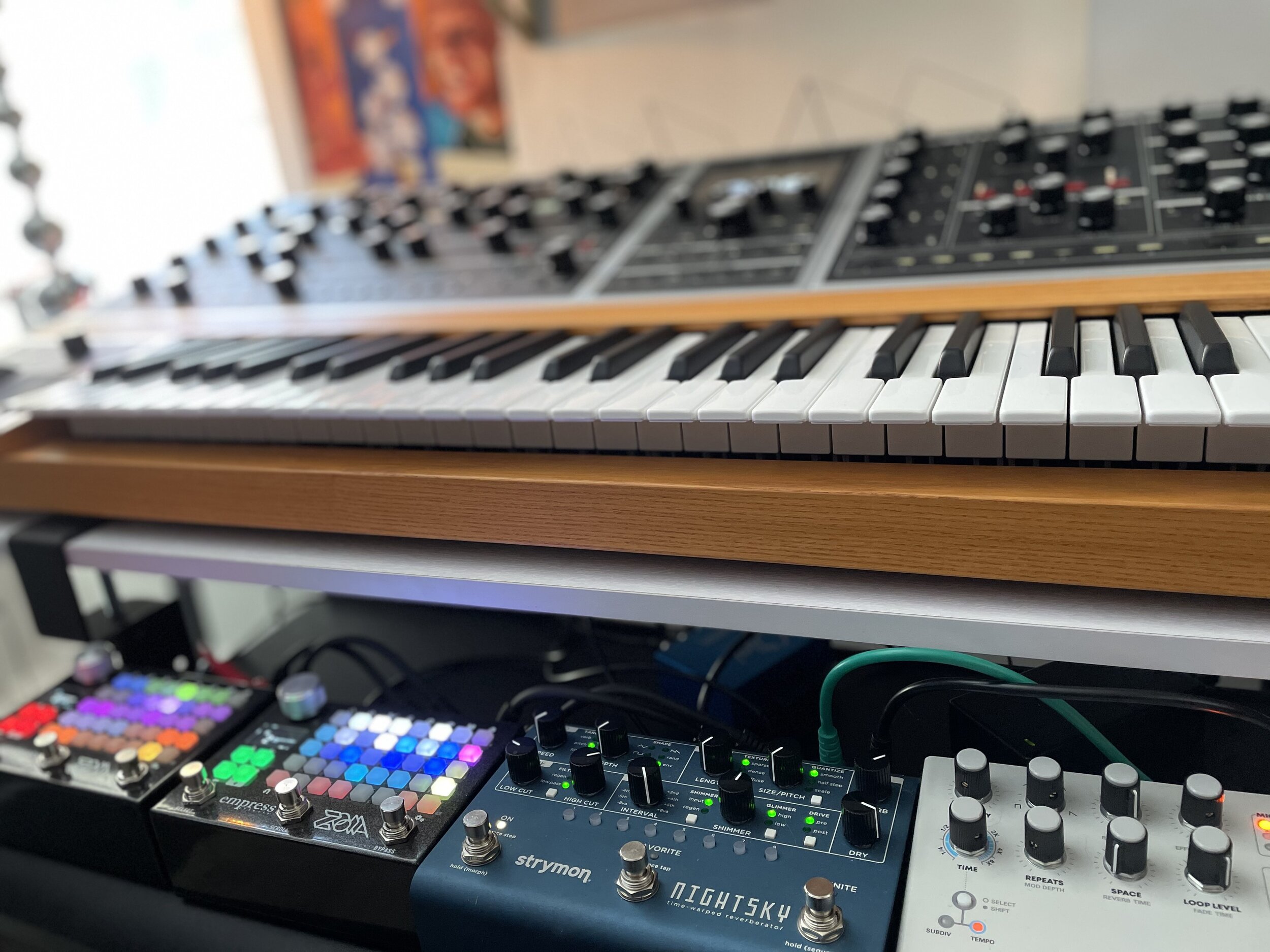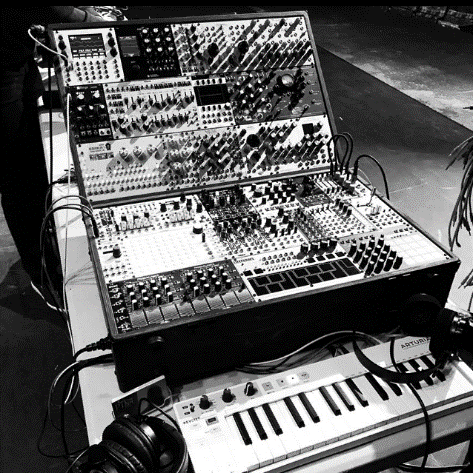Justin Olson began his music journey with the Violin at age 3 before joining the Phoenix Boys Choir at age 8 where he learned to sight read sheet music and was featured as a solo vocalist. Following his involvement with the Phoenix Boys Choir, Justin went on to play Saxophone in the Junior High School Band and began to learn the Guitar at the age of 12. During this same year, Justin acquired a 4-track tape recorder and began to record himself and write songs. Justin continued to write songs and make recordings through High school, where he joined his first band, which won the “battle of the bands,” and where he performed with the high School Choir.
In College, Justin shared his songs in live performances and open mics. This was a great way to build confidence as a performer, and learn the satisfaction of sharing your creations with the world. As an artist, it is easy to become lost in your head and process, live performance is a very important tool to receive feedback and input that guides your creative output and can give you the needed confidence to share it with the world.
After College, Justin began to play Performance Gigs around the state of Arizona including: Tempe Center for the Arts “ Singer Songwriters Showcase” in partnership with PBS, “Knock the Blues out of Hunger” Blues Festival, Glendale Folk Festival, Weekly “Fun Fridays” at the Tempe Center for the Arts and most recently, a live Eurorack Modular Performance at , “ Wireheads” in downtown Phoenix.
In addition to various live Performances, Justin signed a Music Contract with Electric Lotus Music and Recorded his first Studio album titled, “Amber Waves.”
In 2014, Justin began his journey into Synthesizers, Electronic Drums, Samplers and Drum Machines. Justin wanted to take a step out of his comfort zone and grow as an artist ; He was seeking new challenges and tools to make music. Justin explored many electronic music machines from Elektron, Korg, Moog, Dave Smith etc.
In late 2014, Justin dove into Eurorack Modular synthesis. Justin was struck by the interface of blinking lights, cables and creating his own custom instrument. Eurorack synthesis is an amazing sound creation tool to learn the individual elements of a synthesizer and to become very efficient at signal flow and sound design.
Since 2014, Justin has focused on creating musical projects, performances and albums on his Eurorack Modular. He has released 20+ albums of music during this time-frame and has enjoyed the process of patching a song over hours to days and then performing it live and capturing the performance.
Justin enjoys introducing people to Modular synthesis and being a knowledgeable resource to expose and bring students into the area of study and creation. His mission is to help guide newcomers through the vast market of gear, resource material and introducing them to basic skills that build on each other and provide a strong foundation to continue their very personal journey of building their own Modular instrument.
Resources:
https://ptna.bandcamp.com/
https://www.teepublic.com/user/ptnamusic
Facebook: Justin Olson aka PTNA
Instagram: ptnamusic
Music also available on: Apple itunes, Spotify and Amazon










































